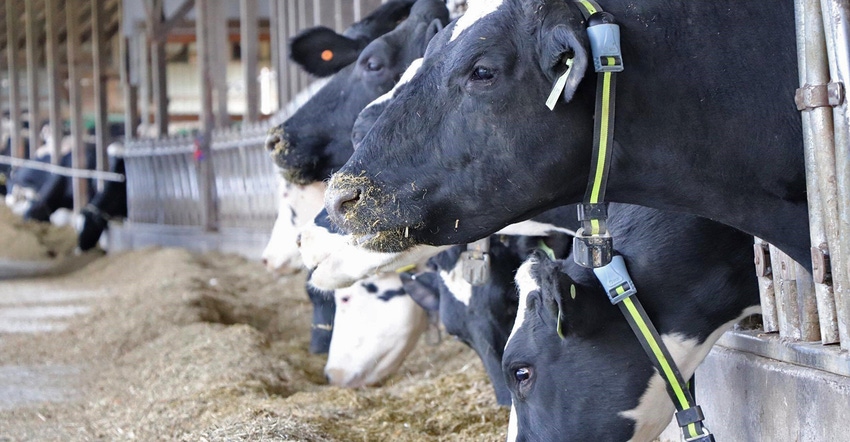
With 9.31 million cows, the U.S. dairy herd has decreased to its smallest size since early 2016. But because of continuing productivity increases, the amount of milk produced is up 2% from August 2018, according to USDA.
University of Wisconsin-Madison dairy economists Mark Stephenson and Bob Cropp say the September milk production report, with U.S. milk output climbing 1.3% over a year ago, is a surprise.
“Production is stronger than anticipated, and almost all of that comes from more milk per cow,” Stephenson says.
Nationally, cow numbers are down 53,000 head from last September — though they are up 7,000 head from August 2019. But milk per cow was up 33 pounds in September over a year ago.
“We have improved milk prices, and producers are going to get as much milk as they can to take advantage of that — just to get some cash flowing on these farms,” Stephenson says. “But I’m surprised they are doing it with milk per cow.”
Feed quality was an issue this past summer, though most farms are still probably feeding old-crop silage. New-crop silage is barely in the bunker and will take at least a month or two to ferment properly.
Volatile cheese prices
The economists say cheese prices from September through the third week of October have been extremely volatile, with block prices climbing to over $2 per pound and then declining. The once wide spread between blocks and barrels has virtually disappeared, with barrels rising above blocks in mid-October before retreating slightly.
“Some of it may have to do with pre-holiday buying,” Cropp says. “Some companies might jump into markets to buy up needs, acquire them and then disappear. That could create some uneven buying patterns that are adding confusion to an already unsettled market.”
Both Cropp and Stephenson remain optimistic about milk prices, predicting strong prices in the fourth quarter of 2019 and the first quarter of 2020.
“I’m predicting an average of $18.65 Class III for the fourth quarter” Cropp says. “Class III has already hit $19 for November, and I don’t see it dropping off a cliff in the first quarter.”
Cropp says production is unlikely to continue to grow early next year because of feed quality issues and reduced heifer replacement numbers. He sees Class III holding in the strong $17s in the first half of 2020 and climbing to $18 in the second half.
Stephenson agrees. “I don’t see a big surge in milk supply next year, but I’m more concerned about a drop in demand should the economy slow,” he says.
Meanwhile, feed costs are 15% lower than the 12-month average, thanks to reduced costs for alfalfa hay and corn.
More cheese exports
Driven by export market expansion, Rabobank is forecasting increased global cheese demand between 2019 and 2024. Along with this growth, there is “significant change in the global cheese trade arena,” Rabobank said in its new report, “Global Cheese Trade Dynamics.” The global trade arena is dominated by the key cheese-producing regions, the report said. About 70% of global cheese exports originate in the European Union, the U.S., Oceania and Argentina.
Most notably, the external trade balance from the EU, which is the largest cheese-producing region, increased by 60% between 2009 and 2019. Meanwhile, in the U.S., a strong production base and an industry drive to grow exports has transformed the U.S. cheese sector from a negative to a positive trade balance in the past decade.
About the Author(s)
You May Also Like






